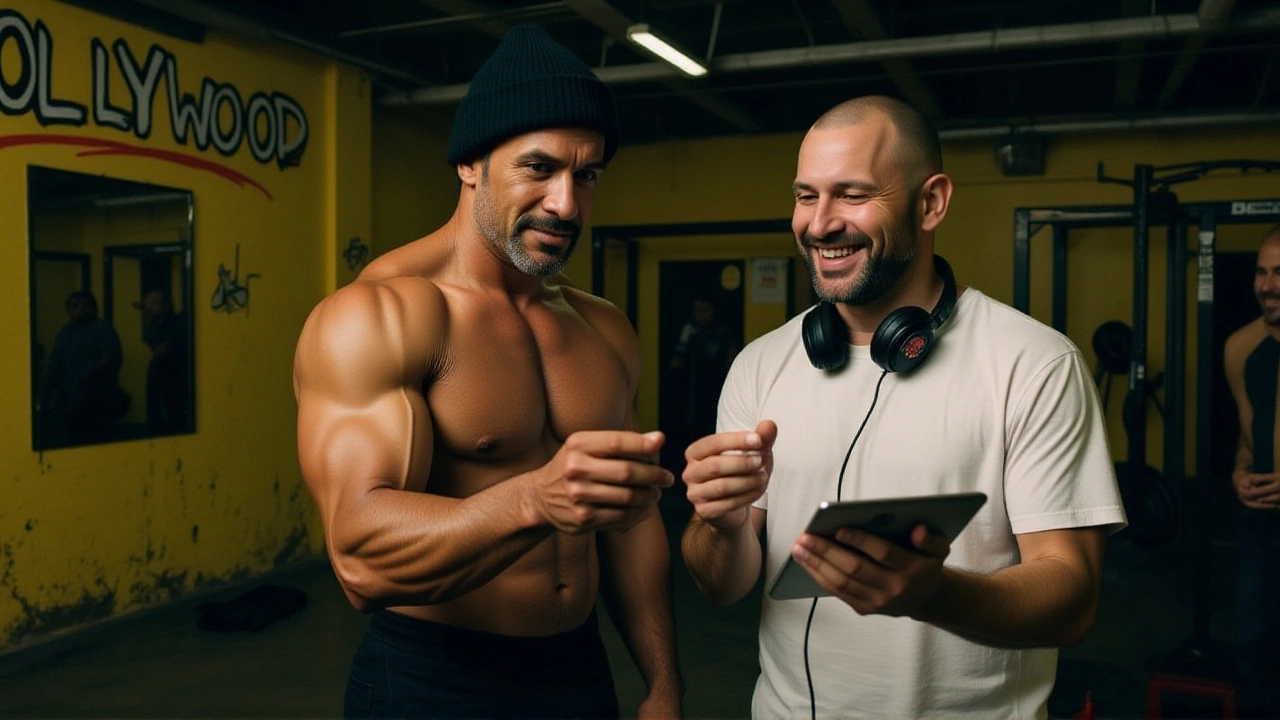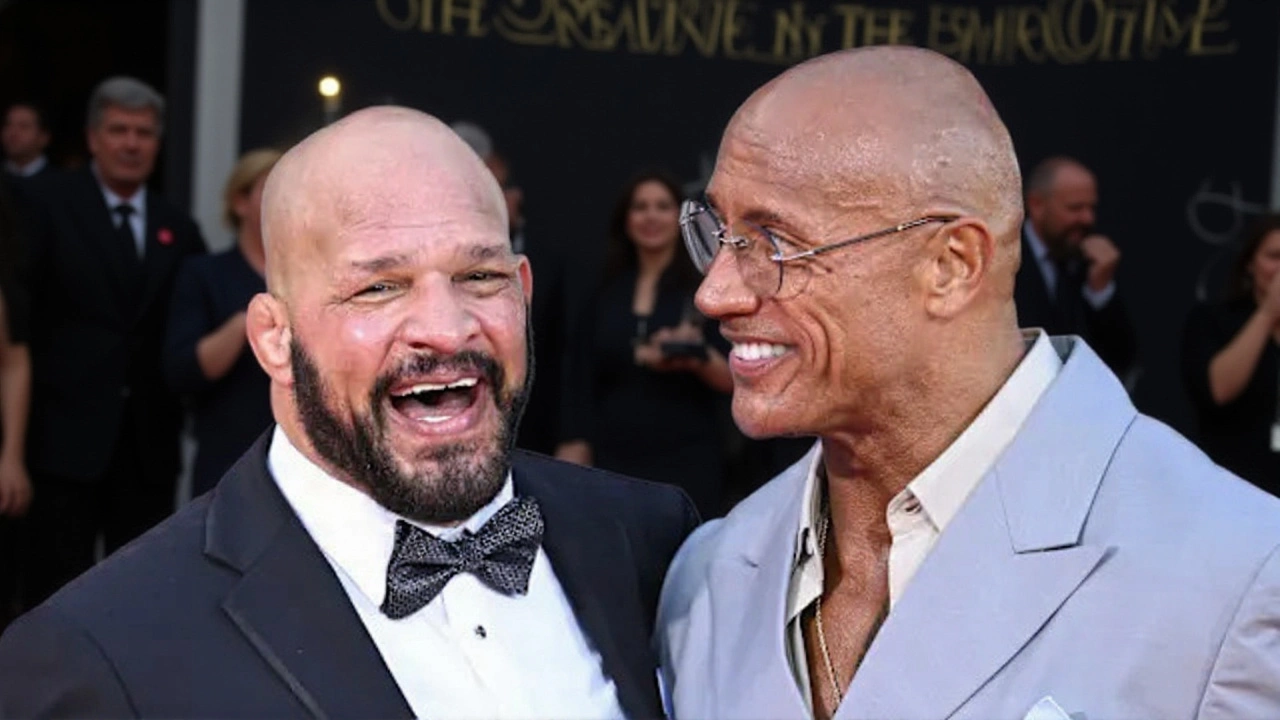
When Dwayne Johnson stepped into the shoes of legendary mixed‑martial‑arts fighter Mark Kerr for The Smashing Machine, the world took notice at the Venice International Film FestivalVenice. The film, an unconventional biopic directed, written, co‑produced and edited by Benny Safdie, collected the Silver Lion on its opening night, signaling a bold new direction for sports drama. The Smashing Machine is set to roll out across the United States on October 3, 2025, courtesy of A24, adding another heavyweight title to the studio’s indie‑film catalog.
Background and Production
Safdie’s fascination with extreme athletes dates back to his 2002 documentary, The Smashing Machine: The Life and Times of Extreme Fighter Mark Kerr. Rather than simply recasting the documentary’s footage, he rebuilt the narrative from the ground up, hiring a cast that reads like a who’s‑who of the MMA world. Beside Johnson, Emily Blunt plays Dawn Staples, Kerr’s estranged wife, offering a grounded counterpoint to the ring‑centric chaos.
Supporting roles include former UFC champion Ryan Bader as rival Mark Coleman, and real‑life legend Bas Rutten appearing as himself. Even heavyweight boxer‑turned‑MMA star Oleksandr Usyk steps onto the screen as Igor Vovchanchyn, adding authenticity that seasoned fans can’t ignore.
Premiere and Awards
The festival debut was anything but ordinary. Safdie chose to screen the film in the main competition—usually reserved for arthouse fare—underscoring his intent to blur the line between genre and art. The Silver Lion jury praised the film’s “unflinching gaze” and “inventive choreography of combat,” noting Johnson’s transformation from Hollywood action hero to a genuinely conflicted athlete.
Critics in Venice were split on the film’s pacing, but the consensus was clear: the performance earned Johnson his first major acting accolade. "It's the most layered role he's taken," wrote one reviewer for Variety. "He’s not just a big‑muscle star; he’s a man wrestling with identity, fame, and the weight of his own myth."
Stylistic Choices and Critical Reception
Safdie deliberately dodges the classic sports‑movie playbook. Fight scenes are often filmed from just outside the ropes, the camera slicing the action into fragmented panes, or from a bird’s‑eye view that feels more like a technical diagram than a visceral brawl. The soundtrack alternates between nostalgic pop‑rock tracks and a relentless jazz score, constantly reminding the audience they are watching a constructed narrative.
Some reviewers applaud this “anti‑biopic” stance, arguing it forces viewers to confront the myth‑making machinery of sports culture. Others feel the third act loses emotional heft, turning the climax into a “pretty slack tent” of under‑cooked conflict. Regardless, the meta‑casting of Johnson—himself a former professional wrestler known as "The Rock"—adds a delicious layer of self‑reflexivity that few films can claim.
On Rotten Tomatoes, the film holds a 82% approval rating, with the average score hovering around 7.4/10. The New York Times highlighted Johnson’s “subtle physicality,” noting how he adopts Kerr’s distinctive lanky posture and methodical breathing pattern during press conferences.

Box Office and Release Strategy
A24 plans a staggered rollout, opening in major markets like New York, Los Angeles, and Chicago on October 3, 2025, before expanding nationwide in early November. The distributor is counting on the festival buzz and Johnson’s star power to draw both hardcore MMA fans and casual moviegoers.
Industry analysts predict a domestic opening weekend of $22‑$25 million, a respectable figure for a mid‑budget drama ($35 million production cost). Internationally, the film will capitalize on the growing appetite for MMA content in Europe and Asia, with a particular focus on markets where the original documentary still enjoys cult status.
What This Means for the Sports Film Genre
By turning the sports biopic on its head, Safdie may have opened a door for future directors to explore athletes’ inner lives without resorting to the usual montage‑of‑training‑sequences. If the film’s experimental visuals and self‑aware casting resonate with audiences, we could see a wave of “anti‑sports” movies that prioritize psychological texture over trophy‑capped triumphs.
For Johnson, the role could mark a turning point. Should he continue down this path, we may witness a broader shift in how big‑budget stars approach “serious” roles—mixing commercial draw with artistic risk.
Frequently Asked Questions
What makes "The Smashing Machine" an "anti‑biopic"?
Safdie avoids the conventional rise‑and‑fall arc by filming fights from detached angles, using split‑screen fragments, and inserting a soundtrack that constantly reminds viewers they are watching a film. The result is a narrative that observes rather than glorifies Kerr’s career, thereby subverting typical biopic storytelling.
How accurately does the movie portray Mark Kerr’s MMA career?
While the film captures Kerr’s larger‑than‑life persona and key rivalries—such as his clash with Mark Coleman—it glosses over technical training details. Critics note that newcomers may miss the nuance of Kerr’s conditioning and fight strategy, as the focus leans more toward his psychological journey.
Why is Dwayne Johnson’s performance considered his best yet?
Johnson sheds his typical blockbuster swagger, embodying Kerr’s nervous energy, lanky frame, and inner turmoil. Reviewers highlight his subtle physicality—how he adjusts his posture in press conferences and uses restrained facial expressions—showcasing a depth of acting that many hadn’t seen in his previous roles.
When will the film be available for streaming?
A24 has slated a digital release roughly six weeks after the theatrical window, putting the movie on platforms like Apple TV+ and Amazon Prime Video by mid‑November 2025. A limited physical media edition—Blu‑ray with extra documentary footage—is also planned.
How does the film’s style compare to other sports movies?
Unlike the kinetic, immersive fight sequences of “Creed” or “Rocky,” Safdie’s approach feels observational, almost clinical. The camera rarely puts the audience inside the ring; instead, it watches from the periphery, turning combat into a visual study rather than a visceral thrill—something rarely attempted in mainstream sports cinema.